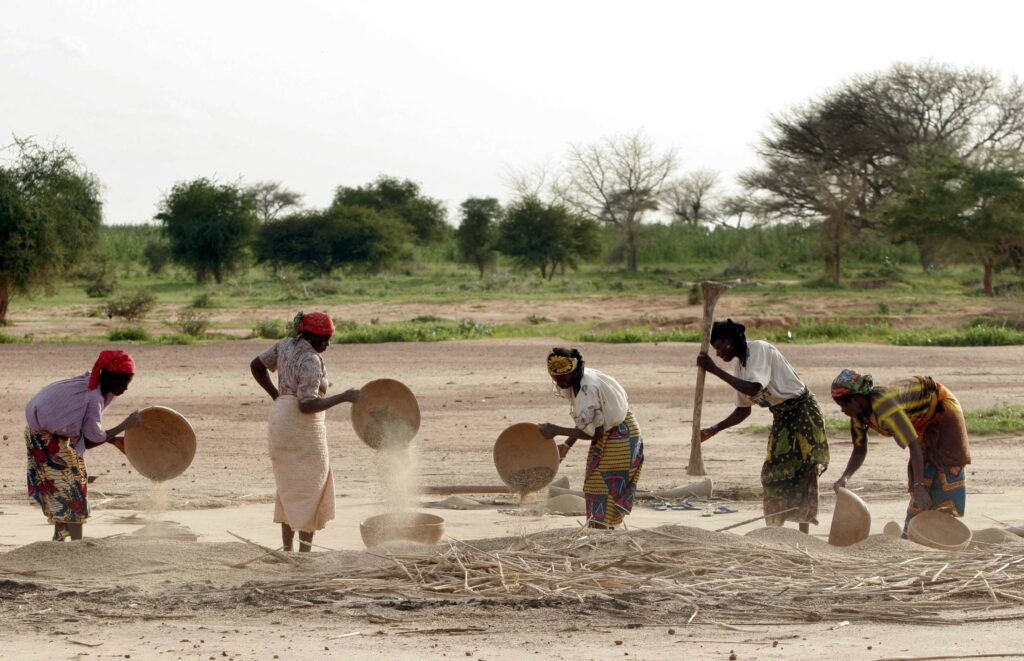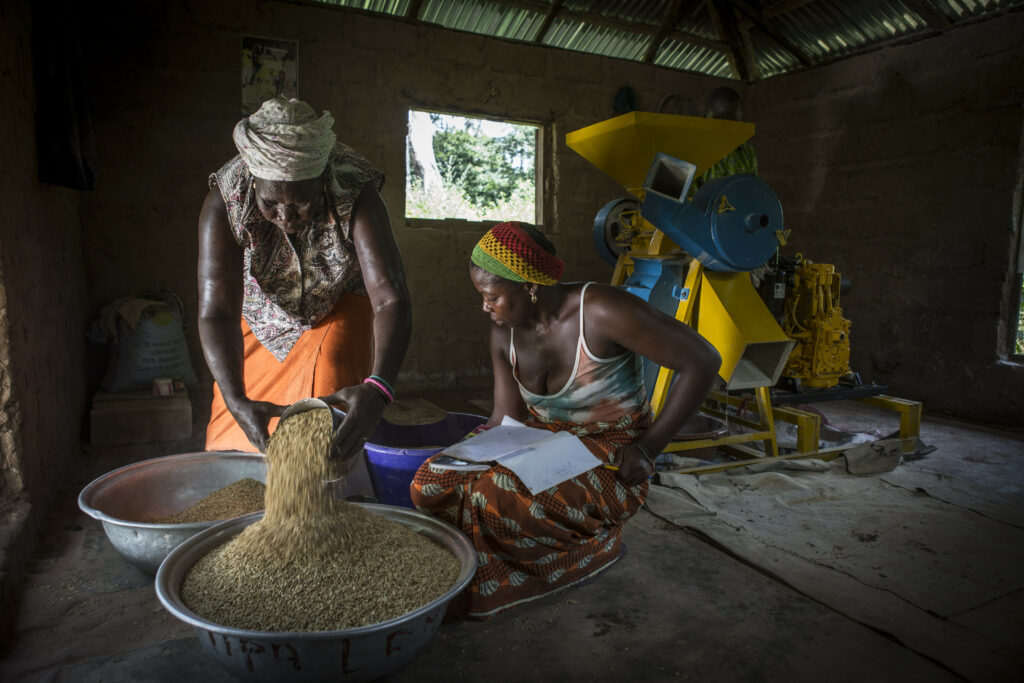Share Twitter Facebook Email Copy URL
What has long been ignored became obvious during Covid-19 lockdowns in many regions worldwide: A large part of agricultural labour is organized through extremely precarious forms of wage labor. Labour rights are often violated in the process. Its high time for new strategies that better understand the key importance of the rights to freedom of organization and collective bargaining.
The lockdowns in the wake of the Corona crisis have been accompanied by a worsening of the food crisis in many countries in recent months. In regions as diverse as South Asia, East Africa or Western Europe, it became visible in mainstream politics and media how much agriculture by no means depends only on farmers, but also on the seasonal recruitment of migrant workers. A class of workers, that for a long time has only been characterized as “unskilled labour” suddenly was considered as “essential workers”.

Invisible due to lack of statistics
The ignorance about the key role of rural workers starts with statistics. While every single government in the world produces its stats on yields and productivity in agriculture, only a few countries collect nationwide data on the workers that produce these yields. One exception is India, where nationwide surveys in 2011 revealed that the incomes of more than 50 percent of rural households depend primarily on short-term forms of wage labor. More commonly, government agencies work with highly inaccurate assumptions. In Uganda, for example, national labor statistics indicated that 11 percent of women were engaged in wage employment in agriculture. In-depth scientific research, on the other hand, concluded that this was true for 44.8 percent of women.
There are several reasons for the statistical shortcomings: First, the precariousness of low-income households is characterized precisely by the fact that they have multiple sources of income. It is conceivable, for example, that a household might cultivate two hectares of its own land, that the sons might be employed on a plantation in another region, and that the daughters might be day laborers helping their neighbor in the fields. Secondly, agricultural work is strongly influenced by seasonal demand. People often work for three months during the harvest period and not for nine months. This is hardly recorded in national labor statistics; often such households are roughly classified as “smallholder.” Accordingly, even at the global level, only vague estimates exist on the quantitative importance of wage labor in agriculture. In 2013, the UN Labor Organization (ILO) estimated that of 1.1 billion people working in agriculture, about 40 percent, or 300 to 500 million people, were employed.
Social differentiation
As different as agricultural structures are in different regions of the world: Dependent employees make up a significant portion of the labor force, and their importance continues to grow relative to smallholder agriculture. Social structures in rural areas are complex and dynamically evolving all over the world. In many regions that were still primarily small-scale farming in the mid-20th century, a process of social differentiation has taken place and continues to take place with the penetration of capitalism. The rural sociologist Henry Bernstein has described this process as follows: A first group of smallholder households that initially farm their own piece of land manage to become commercially successful through access to credit and markets. They increase production and hire external labor. A second group of smallholder households maintains stable production levels by being partially integrated into markets. A third, very large and growing group of smallholder households fail to survive economically or lose their land. This group either migrates to the cities in search of wage labor or hires itself out on farms and plantations. While this factor of social differentiation tends to increase the number of landless farm workers over time, we can at the same time observe the counter trend of mechanization and digitalisation on farms, that tends to reduce the number of workers.
Massive labor rights violations
Rural workers are in a weak position vis-à-vis farm management. In many cases, the number of poor people in rural areas is high, so that a potential reserve army of workers exists to replace the worker who demands her rights. In regions with a tendency of labor shortage in agriculture, for example in Germany, attempts are made to artificially create the reserve army through ever expanding recruitment in Eastern Europe, just as the US depends for decades on migrant workers from Central America.
Labour relations in agriculture are rarely just merely job relations on a free labour market, but marked by dependency and extreme degrees of precariousness:
- Social hierarchy: Labor relations, especially on large plantations, are characterized by extreme social hierarchy. Between privileged foremen and migrant, socially isolated workers on the one hand, and between men and women on the other. Specific forms of discrimination (such as lack of access to sanitary facilities and sexual violence) are a massive problem. If the workers live on the plantation with their families, they become extremely dependent on the management.
- Lack of social security: A considerable part of the agricultural workforce works seasonally without social security, completely informally or even illegally. In many countries, migrant labor is recruited through forms of hired labor via shady subcontractors.
- Low wages: wage levels in agriculture are usually significantly lower than wages in other sectors of the economy. In some countries, agriculture is even explicitly excluded from minimum wage regulations. In many cases, wages are still paid not according to working hours, but according to the amount harvested, which forces farmers to work hard in order to receive the agreed wages. Often, incomes are so low that workers and their families suffer from malnutrition.
- Violation of applicable labor laws: Government authorities often find it difficult to monitor compliance with applicable standards in remote rural areas. The ILO estimates that only 5 percent of the world’s farms are covered by labor inspections. Agriculture is the sector in which forms of forced labor and child labor are still particularly widespread worldwide.

New strategies are needed
What must be done to in order to reshape agricultural policies that improve the lives of farm workers and to build more just and sustainable food systems? I think strategies must make sure to build up on the following three points:
- The workers legitimate own organisations must play a key role in agricultural- and food policy debates: It is surprising how often agricultural trade unions are ignored and sidelined in agricultural policy debates. Rural trade unions are diverse. They can range from unregistered grassroots organizations on individual farms to broadly organized federations at the national level. Unions operate in a variety of political contexts. In repressive contexts, workers may organize on farms in clandestine night meetings. In other cases, unions may succeed through collective bargaining to win better working conditions for all, permanent and seasonal workers alike. Labor disputes often involve a high level of personal risk for union activists. These unions need support and must be involved in key policy spaces.
- Use the existing ILO conventions. These conventions are agreements which are ratified by the individual states and thus create legal obligations for the states. They are therefore more legally binding than, the various declarations, principles an voluntary guidelines that the UN develops year by year. Some of the conventions, such as Convention 183 (right to maternity protection) or Convention 184 (health protection in agriculture), are strong, very concrete instruments that should be used in order to protect the rights of farm workers.
- Understand the key role of farm workers in the socio-ecological transformation of agrifood systems. In order to cope with the climate crisis and shift toward agroecologically sustainable systems, it is not enough to support local agroecology solutions by smallholder farmers. Farm workers must be brought on board as well. They are among the key social groups that are mostly affected by heat stress due to climate change and by the disastrous health impacts of pesticide use. In order to transform agriculture at large-scale, farm and plantation workers must be part of the transformation.
By Benjamin Luig, Fair Mobility Project Coordinator for the Construction and Agriculture Sectors at the European Migrant Workers' Association. From 2016 to 2019, he led the Food Sovereignty Dialogue Programme of the Rosa-Luxemburg-Stiftung in Johannesburg.



